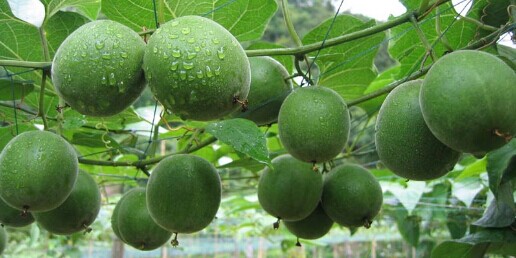China’s
fierce protection of the luo han guo may be about to bear fruit as
demand for mogroside - a natural sweetener made from the indigeneous Chinese
fruit - soars across the globe...

The
rise of stevia has generated a lot of headlines in recent years, but it is not
the only natural sweetener produced in China that is in demand.
Over
180 products sweetened with mogroside were launched in the US during the first
five months of 2015 alone, according to statistics from InnovaDatabase. That’s
an increase of 140% on the same period last year.
The
sweetener is popular in Europe and Japan but is particularly so in the US,
where demand more than doubled between 2011 and 2014 and companies including
Coca-Cola, General Mills and Chobani are already using it.
And
CCM forecasts that this year the
global market for mogrosides will grow another 8 per cent to reach USD65
million.
Protecting
the luo han guo
A
low-calorie, natural sweetener that is up to three hundred times sweeter than
sugar, demand for mogroside is being driven by the same trends as those
fuelling the rise of stevia, according to Wu Hulian, editor of Sweeteners
China News:
“Consumers
across the world are increasingly concerned about consuming too much sugar,
with the increased risks of obesity and diabetes that come with it. However,
rightly or wrongly, many are also concerned about the safety of artificial
sweeteners,” said Wu. “Food and beverage companies are really starting to take
notice of this, which is fuelling the rise of natural substitutes such as
stevia and mogroside.”
In
fact, China sees such potential in mogroside that it has taken legislative
action in a bid to protect its monopoly over the cultivation of luo han guo,
the fruit from which mogroside is produced.
The
Announcement of Monk Fruit Production in Yongfu, passed in 2004, banned
the removal of luo han guo seeds or genetic material from China.
The
Guangxi bottleneck
Stevia
is currently a far more widely used ingredient than mogroside. In China, only
200 tonnes of mogroside are produced each year compared to around 3,000 tonnes
of stevia, according to CCM’s research.
However,
this may be about to change.
Mogroside’s
relatively small market share to date is not due to a relative lack of demand,
but rather a lack of supply.
Up
to now, luo han guo have been grown almost exclusively in Guangxi in
South West China, as the fruit requires a rare combination of warmth and
shelter from the sun to flourish. To date, over 90 per cent of China’s output
of luo han guo comes from the Guangxi.
What’s
more, it requires a huge amount of luo han guo to produce a significant
quantity of mogroside, which has led to a supply bottleneck for producers. Guilin
GFS Monk Fruit Corp., one of China’s leading mogroside producers, requires over
200 million luo han guo per year to keep its 100-tonne production line
running at full capacity - around 40% of China’s total output.
However,
it is possible that action will soon be taken to alleviate the supply
bottleneck. According to Herbridge Media, over 13,333 ha of land in Hunan
Province was recently identified as suitable for luo han guo cultivation.
For
more information about China’s sweetener market, please visit www.cnchemicals.com or contact us
directly by emailing econtact@cnchemicals.com.
About CCM
CCM is the leading market intelligence provider for China’s sweeteners market.
CCM offers Market Data, Reports, Newsletters, Import/Export Analysis and a
range of Consultancy Services. For more information, please visit www.cnchemicals.com.
-
Average:
-
Reads(4556)
-
Permalink


 Back to Cnchemicals.com
Back to Cnchemicals.com 